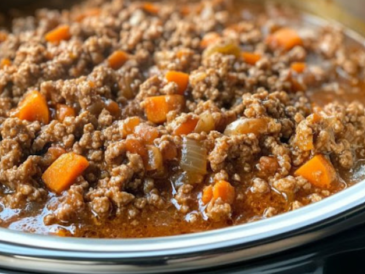Biryani is not just a dish; it’s an experience that captures the heart and soul of Indian cuisine. Traditionally a meat-based dish, biryani has evolved over time to cater to a wider audience, including vegetarians and vegans. Today, we embark on a culinary journey to create a flavorful Vegan Vegetable Biryani that is rich in aroma, colors, and textures. This dish is perfect for festivals, family gatherings, or a comforting meal at home.
The Origin of Biryani
Biryani is believed to have originated from the Persian word ‘birinj,’ which means rice. This dish traveled across borders and gained popularity in India, where various regional interpretations developed. Each region has its unique spin on biryani, with the Hyderabadi, Lucknowi (Awadhi), and Kolkata biryanis being some of the most celebrated variants.
While the traditional biryani is known for its richness and use of meat, our vegan interpretation does not compromise on flavor or intricacy. Instead, we utilize an array of colorful vegetables and aromatic spices to create a mouthwatering dish that everyone can enjoy.
Ingredients: For the Perfect Vegan Vegetable Biryani
A. For the Rice
- Basmati Rice – 2 cups
- Soaked in water for at least 30 minutes.
- Water – 4 cups
- For cooking the rice.
- Bay Leaves – 2
- Cardamom Pods – 4
- Cloves – 4
- Cinnamon Stick – 1 (2-inch piece)
- Salt – 1 teaspoon
B. For the Vegetables
- Cauliflower – 1 cup
- Cut into small florets.
- Carrots – 1 cup
- Diced.
- Green Beans – 1 cup
- Chopped.
- Peas – 1 cup
- Fresh or frozen.
- Potato – 1 medium
- Diced.
- Bell Peppers – 1 cup
- Chopped (use a mix of colors).
C. For the Biryani Masala
- Onions – 2 medium
- Thinly sliced.
- Tomatoes – 2 medium
- Chopped.
- Ginger-Garlic Paste – 2 tablespoons
- Green Chilies – 2
- Slit (adjust to taste).
- Turmeric Powder – ½ teaspoon
- Cumin Powder – 1 teaspoon
- Coriander Powder – 1 teaspoon
- Garam Masala – 1 teaspoon
- Cilantro (Coriander Leaves) – ¼ cup
- Chopped for garnish.
- Mint Leaves – ¼ cup
- Chopped for garnish.
- Oil – 3 tablespoons
- Coconut or vegetable oil works well.
Cooking Method
Step 1: Cooking the Rice
- Prepare the Rice:
In a large pot, bring 4 cups of water to a boil. Add the soaked basmati rice, bay leaves, cardamom pods, cloves, cinnamon stick, and salt. Once the water resumes a boil, reduce the heat to low, cover, and cook for 15-20 minutes until the rice is fluffy and cooked through. Fluff the rice gently with a fork and set aside.
Step 2: Preparing the Vegetable Masala
- Sauté the Onions:
In a large, heavy-bottomed pan, heat the oil over medium heat. Add the sliced onions and sauté until golden brown. - Add the Aromatics:
Stir in the ginger-garlic paste and green chilies, cooking for an additional minute until fragrant. - Incorporate the Tomatoes:
Add the chopped tomatoes and cook until they turn soft. This should take about 5 minutes. - Spice it Up:
Mix in the turmeric, cumin, coriander powders, and a pinch of salt. Cook for 2-3 minutes until the spices are well incorporated. - Cook the Vegetables:
Add the chopped vegetables: cauliflower, carrots, green beans, peas, and potato. Mix well and cook for another 10-15 minutes. Stir occasionally to ensure even cooking. - Finishing the Masala:
Once the vegetables are tender, sprinkle garam masala, chopped cilantro, and mint leaves. Mix well and cook for an additional minute. Turn off the heat.
Step 3: Layering the Biryani
- Combine Rice and Vegetables:
In the same pot (or a large serving dish), layer half of the cooked rice, followed by the vegetable masala. Spread the remaining rice on top. This layering technique helps the flavors meld together during the final cooking stage. - Steam the Biryani:
Cover the pot with a tight-fitting lid to trap steam, and cook on low heat for 10-15 minutes. This ‘dum’ cooking method helps to infuse the rice with the vegetable flavors.
Step 4: Serving the Biryani
- Once the biryani is steamed, gently fluff it with a fork. Be cautious not to break the rice grains.
- Serve hot, garnished with additional cilantro and mint leaves.
- Pair it with your favorite side dishes such as vegan raita (yogurt-based condiment), salad, or chutney.
Tips for the Perfect Vegan Vegetable Biryani
- Quality Rice:
Basmati rice is critical for this recipe. Its long, slender grains fluff up beautifully when cooked. - Vegetable Variations:
Feel free to customize the vegetables based on your taste preferences and seasonal availability. You can include zucchini, mushrooms, corn, or even swap in nuts for added protein. - Spice Levels:
Adjust the spiciness by altering the number of green chilies and using milder or hotter chili powder. - Soaking the Rice:
Soaking the rice before cooking helps it elongate perfectly, resulting in a fluffy texture. - Dum Cooking:
If you want an extra layer of flavor, consider adding a few drops of saffron dissolved in warm water or plant-based milk before sealing the pot for steam cooking.
Nutrition and Health Benefits
Vegan Vegetable Biryani presents an excellent opportunity to enjoy a nutritious meal rich in fiber, vitamins, and minerals. It is a balanced dish with carbohydrates from rice, healthy fats from oil, proteins from the array of vegetables, and a plethora of antioxidants from the spices. Being plant-based, this biryani is lighter on the digestive system and is suitable for vegan diets.
The Experience of Cooking and Serving Biryani
Cooking Biryani is as much about the process as it is about the final outcome. The aroma that fills your kitchen, the vibrant colors of the vegetables as they cook, and the anticipation as you layer the rice and the masala create a sensory experience that immerses you in the culinary tradition.
As you serve the Vegan Vegetable Biryani to your family and friends, you are also serving a piece of culture and history—a dish that has been cherished for centuries. The communal experience of digging into a shared pot of biryani adds to the joy of dining, bringing everyone together around the flavors of India.
Conclusion
Vegan Vegetable Biryani is a delicious way to explore the rich culinary heritage of India while adhering to a plant-based lifestyle. It’s not just a meal; it’s an expression of creativity and respect for flavors that come together in harmony. With this recipe, you can serve a dish that is sure to please everyone at the table, meat-eaters and vegans alike.
So gather your ingredients, roll up your sleeves, and let the spices work their magic. Enjoy the flavors, the aromas, and the company as you share this wonderful dish with loved ones. Biryani is meant to be experienced and enjoyed, and your journey into the world of Vegan Vegetable Biryani is just the beginning!




